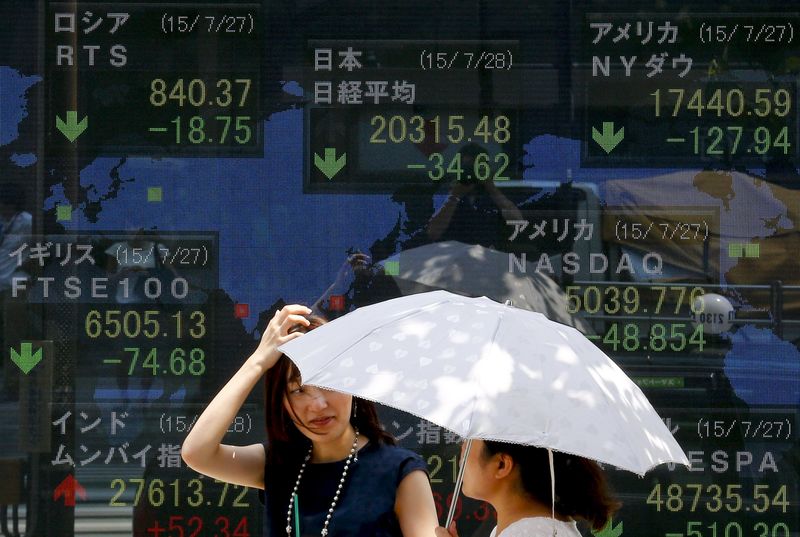This post was originally published on this site
https://i-invdn-com.investing.com/news/LYNXNPEB6R07D_M.jpg
Investing.com – Asia Pacific stocks were mostly down on Tuesday morning, continuing their losses from a day earlier. A global stocks selloff continues as concerns about COVID-19 outbreaks involving the Delta strain and the impact on the global economic recovery linger and boost safe-haven assets.
Japan’s Nikkei 225 was down 0.58% by 10:15 PM ET (2:15 AM GMT). Data released earlier in the day said Japan’s national core consumer price index (CPI) grew 0.2% year-on-year in June, while national CPI growth remained unchanged at 0.3% month-on-month.
South Korea’s KOSPI was down 0.51%.
In Australia, the ASX 200 edged down 0.18%, with the Reserve Bank of Australia releasing the minutes from its latest policy meeting earlier in the day.
Hong Kong’s Hang Seng Index was down 0.41%.
China’s Shanghai Composite fell 0.74% while the Shenzhen Component inched up 0.06%. Geopolitical tensions also rose after the U.S., the U.K. and their allies accused China of being the mastermind behind a series of malicious ransomware, data theft and cyber-espionage attacks against public and private entities, including a hack on the Microsoft (NASDAQ:MSFT) Exchange hack earlier in the year.
The People’s Bank of China also kept its July loan prime rate (LPR) unchanged, with the one-year LPR at 3.85% and the five-year LPR at 4.65%. The LPRs’ release comes after the central bank sprung a surprise cut in the reserve ratio requirement earlier in the month.
In other central bank news, the European Central Bank and Bank Indonesia will hand down their respective policy decision on Thursday.
U.S. shares recorded small gains after the S&P 500 saw their biggest drop in two months, thanks to a reversal of the reopening trade where cyclicals like energy and financial shares slid.
Long-term U.S. Treasury rates rose, after falling to their lowest level since February 2021 on Monday and flattening the yield curve. Meanwhile, benchmark 10-year yields climbed back above the 1.2% mark.
Investors are also calculating how long the volatility driven by COVID-19 outbreaks will last, with retail investors buying dips in stocks becoming a familiar trend.
Outbreaks continue in places ranging from Australia to Indonesia to the U.K., with the U.S. warning its citizens to avoid traveling to the latter as the number of daily cases continues to rise.
“One of the reasons bonds have rallied so much is that institutional investors have rebalanced out of equities, which have had a huge run, into fixed income,” Northern Trust (NASDAQ:NTRS) Bank chief investment strategist Jim McDonald told Bloomberg.
“The recent weakness is justified on a short-term basis. If you look at the issue with the Delta variant and COVID-19, it is a short-term concern, but if you look out to the end of 2021 most of the Western economies will have immunity in the 75% to 80% range,” he added.
Investors are also keeping an eye on inflation, with U.S. President Joe Biden adding his voice to assurances that inflationary pressures will be temporary.
In cryptocurrencies, Bitcoin was just above the closely watched $30,000 level.

